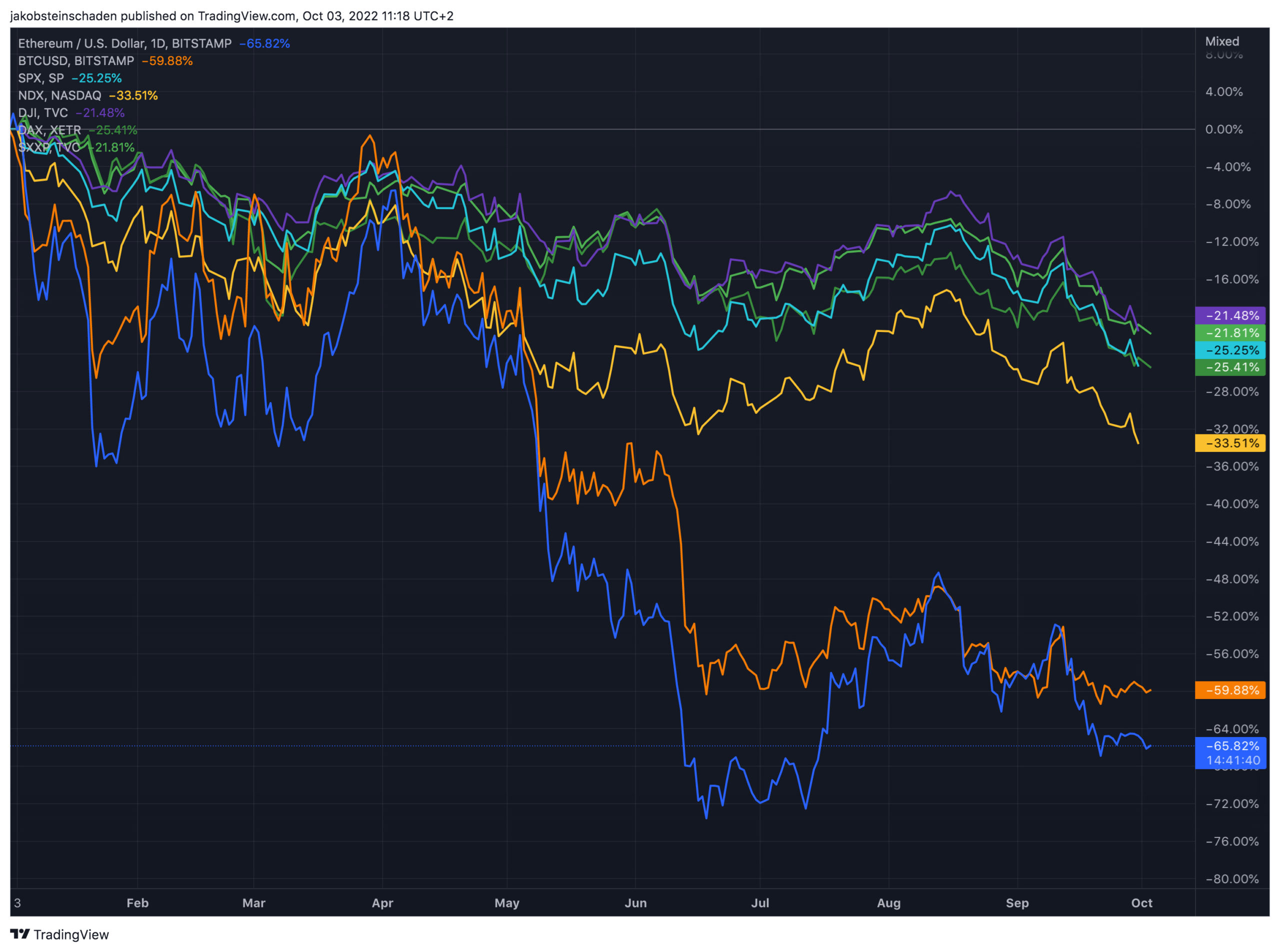Crypto & Stocks: “Extreme Fear” Rules Markets Ahead of Winter

No, it’s not just your mood that sucks. Both the Crypto Fear & Greed Index and the Fear & Greed Index for the regular stock markets currently only know one value: extreme fear. There have been repeated outliers in recent months – for example when the crypto community was looking forward to Ethereum’s “The Merge” or there was a sigh of relief in tech stocks after the summer. But the oppressive “Russian” winter sets the direction: downwards.
That’s why we’re starting an October that probably won’t be an “uptober” like it was the case in some previous years. Because things are looking bleak on both sides of the Atlantic – high inflation, COVID aftermath, energy crisis, and of course the Ukraine war are threatening the prospects of those values in particular that are counting on strong growth in the future – and that’s crypto -Assets and tech stocks.
These risk assets exaggerate what is happening in the rest of the markets. The S&P500, which maps the 500 most important listed companies in the USA, is threatened with its worst quarter (Q3) since 2009 (=financial crisis). If “Dr. Doom” Nouriel Roubini warns of a “long and ugly” recession in the USA, then many are no longer surprised and oppose it with the opposite opinion.
Course fall by the bank
On this side of the Atlantic and thus much closer to what is happening in Ukraine, things look a bit bleaker. At 10 percent, the recession in the eurozone is a bit higher than in the USA (8.5%), and it is now considered certain that Europe’s largest economy, Germany, will also fall into recession in 2023. Parallel to news like this or the pipeline blasts in the North Sea, one can observe how leading European indices such as the DAX or the STOXX 600 (reference index for Europe) give in and give out over the months. The case of Credit Suisse is also currently worrying the market – one of the leading Swiss banks recorded a price loss of around 60 percent in 2022.
Here is a comparison of price developments since the beginning of the year – they show that even very broad stock indices such as the Dow Jones and the STOXX 600 have lost 20 percent:
- Ethereum = Blue
- Bitcoin = orange
- NASDAQ100 = Yellow
- Dow Jones = purple
- S&P500 = Turquoise
- DAX = dark green
- STOXX 600 = light green

Today, hardly anyone likes to predict exactly where share prices and the global economy are headed – the situation is even more uncertain than it already was between threats of nuclear bombs from Russia, shifts to the right in European countries such as Italy and Sweden, and an imminent return of Donald Trump.
What many are counting on: further increases in key interest rates by the end of the year and in the course of 2023. Both the Federal Reserve in the USA and the European Central Bank (ECB) in Frankfurt will continue to try to combat high inflation by raising interest rates. In the USA, the key interest rate is already between 3 and 3.25 percent – one or two more steps up and the 4 percent mark will be reached. The ECB has occasionally raised the key interest rate in the euro area to 1.25 percent – here, too, further increases towards 2 or even 3 percent are to be expected.

Little protection against inflation
In the meantime, it has become apparent that Bitcoin, which is often and happily sold as “inflation protection”, is losing a lot in value. Only in short phases does BTC or Ether manage to break free from the pull of the overall financial economy and develop a life of its own in the course. But most of the time, the coupling of BTC and ETH rates to developments on regular exchanges cannot be overlooked. “Inflation protection – yes, but” – that only applies to those who invested BEFORE the sharp rise in inflation rates or to those in countries like Turkey or Argentina, who see completely different inflation rates.
The bottom line is that there is a murky situation for investments in risky assets with a more than the uncertain outcome. And that’s why the mood is on “extreme fear”.





























